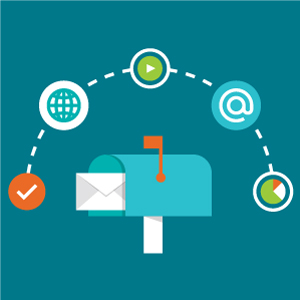
Whether you’re feeling stuck in a rut with your marketing efforts or you want to reach out to a new audience, sometimes you need to shake things up with your marketing efforts! If you’re looking to make a change, here are a few tips for shaking things up with your marketing strategy.
Shake Things Up on Social Media
Because it moves quickly and changes just as quickly, the social media world can be a great way to shake things up with your marketing strategy. First and foremost, if you don’t have an online presence for your business you should definitely create social media pages as a new way to connect with customers. Once you’ve created these pages, it’s time to get started!
If your marketing is a highly polished and conservative affair, consider using social media to show a more casual, more human face to your business. Depending on your customer base, you might also want to show off the visual flair of the print you provide by sharing photographs on social media. This gives you a chance to show a different side of your business and possibly appeal to a whole new market.
Experiment With Seasonal Marketing
With the holidays coming up, you might want to think about how you can create seasonal marketing for your business. Not only is embracing the holiday season a great way to shake up your marketing and give you the chance to try something new, it is also a great way to experiment with new things without dedicating your marketing strategy to them long term.
Talk to Your Customers
Are you looking for a lower-risk opportunity for change? Talk to your existing customers about what they love about your business and what they wish they had known when they first started to do business with you. You might find that you aren’t highlighting the best that you have to offer and have the opportunity to change your marketing for the better.
Reach Out to Find New Ideas
This isn’t just one way to shake up your marketing—it’s opening the door to potentially endless ways! By reading books or blogs and following social media accounts written by people outside your specific industry you might find inspiring new ideas. As print professionals, you have a lot of choices—read a book on marketing strategies from a professional marketer, read blog posts about the markets that you work with most often, or follow small business owners to learn about a variety of new topics.
How do you shake up your marketing efforts? We would love to see you join the conversation in the comments below.
 The summer is nearly over, and soon students will be going back to school.
The summer is nearly over, and soon students will be going back to school. With every year, your customer has more and more options for their marketing campaigns. Email, print ads, television ads, digital ads, and direct mail all compete for their time and budgets. However, direct mail is an essential tool for their marketing campaigns, and the statistics prove it. Here are five direct mail statistics that your customers should know!
With every year, your customer has more and more options for their marketing campaigns. Email, print ads, television ads, digital ads, and direct mail all compete for their time and budgets. However, direct mail is an essential tool for their marketing campaigns, and the statistics prove it. Here are five direct mail statistics that your customers should know! You’ve missed a call. Maybe you stepped out of the office for a moment, or maybe you were out of town for a few days. You might have even received a call over the weekend when your business wasn’t open. Whatever the reason, you’ve got a voicemail, and one of these characters might be waiting for you! Have you met these characters on your voicemail?
You’ve missed a call. Maybe you stepped out of the office for a moment, or maybe you were out of town for a few days. You might have even received a call over the weekend when your business wasn’t open. Whatever the reason, you’ve got a voicemail, and one of these characters might be waiting for you! Have you met these characters on your voicemail?